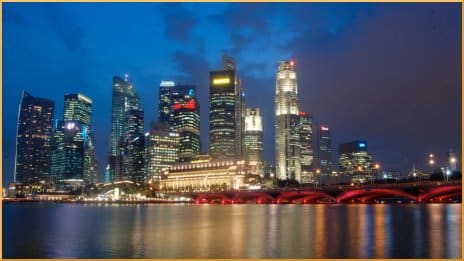
GuideMeSingapore.com tells us that the island city-state contains more than 4,500 food and beverage establishments, “from hawker stalls to fine dining restaurants.” About 14% of tourist expenditure winds up in the bank accounts of these eateries. Formerly occupied by Britain and then by Japan, Singapore sponsors a huge annual food festival and indeed takes pride in its reputation as the food capital of Asia. Information is provided to entrepreneurs about how to start a food-related business or import concern, and the word “obesity” is not mentioned. But no matter how willing Singapore might be to feed visitors, it keeps an eagle eye on the physiques of its young students.
Back in 1992, with about 14% of kids in Singapore classified as overweight, the Ministry of Health initiated the “Trim and Fit” (TAF) program to address childhood obesity. All health professionals involved with the well-being of children were urged to find ways to increase physical activity and help kids develop healthier eating habits. There would be behavior treatment programs, and rather than directing efforts only at the children, the authorities would bring parents into the intervention pattern.
Of course, the schools already mandated physical education for all, but overweight kids were assigned additional workouts, aerobics classes and jogging time. For an overweight or obese child, lots of rigorous extra exercise was the rule, and kids were members of the TAF program until they got their weight down. Schools could not control what their young charges ate at home, but the snack-time caloric intake of overweight kids was strictly monitored as part of the education process.
By 2005, the overweight rate was down to around 10%, which was about as high as the authorities were inclined to ever accept. There does not seem to have been competition among individual students, but schools were compensated with awards at the gold, silver and bronze levels for their overall performance in reducing overweight and obesity. Non-gold schools would be visited by Ministry of Health representatives who were called consultants, but everyone knew that receiving such a visit meant a serious loss of face or self-esteem for the schools concerned.
Singapore’s government is described by GuideMeSingapore.com as a socialist democracy with a political culture that is “authoritarian, pragmatic, rational and legalistic.” A Bloomberg.com article describes it as “the cleanest government money can buy.” It was rated by organizations that keep track of such things as one of the world’s “top five least-corrupt governments” and “among the best governed,” all of which sounds either reassuring or frightening, depending on one’s political bent. Singapore has also been called a “nanny state” whose rulers exhibit far too much interest in micromanaging the lives of its people.
(…to be continued)
Your responses and feedback are welcome!
Source: “Guide to Incentives for Food Industry in Singapore,” GuideMeSingapore.com
Source: “Singapore schools making fat students thin, but emotional burden is heavy,” Singapore-Window.org, 02/22/05
Source: “Introduction to Singapore’s Political System,” GuideMeSingapore.com
Source: “Why Singapore Has the Cleanest Government Money Can Buy: View,” Bloomberg.com, 01/25/12
Image by Edwin.11

 FAQs and Media Requests:
FAQs and Media Requests: 











